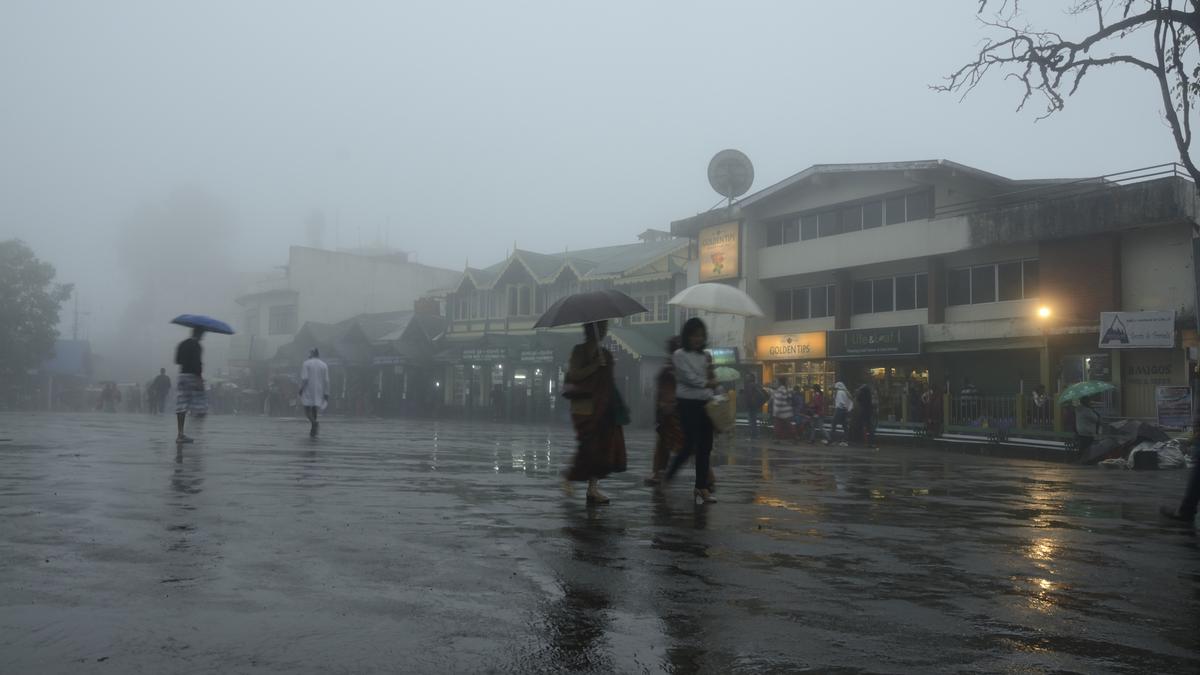
Managing Chennai monsoon
The Hindu
Chennai requires a new imagination of its relationship to the unpredictable showers, the sea, and its water reservoirs. Here are five takeaways from the recent rains
Over the past few years, Chennai has continued to receive unprecedented rainfall during the annual northeast monsoon. Sudden bursts of increased rainfall, with large volumes of water in very short spans, often result in urban floods, revealing the city’s vulnerability. Confronting the challenges of climate change, Chennai needs to find a solution that primarily enables its water reservoirs to absorb, store or recharge groundwater. The focus shifts to the imperatives of organised urban planning and the need to protect and rejuvenate Chennai’s water reservoirs — Pallikaranai marsh, Ennore creek and other large reservoirs such as Chembarambakkam lake and Red Hills lake.
The organic and rapid growth of the city has disrupted the natural hydrological cycle with the expansion of concrete and tar-paved surfaces, indiscriminate constructions and felling of trees and vegetation. Environmentalists suggest that this could be some of the many reasons behind urban floods, besides augmenting the capacity of the three rivers and their reservoirs — Adyar, Cooum and Kosasthalaiyar. The city requires a new imagination of its relationship to the unpredictable monsoons, the sea, and its water reservoirs.
Over the last three decades, Chennai has been at the forefront of rainwater harvesting. The Chennai Metropolitan Water Supply and Sewerage Board (CMWSSB) provides detailed information about water harvesting and its relationship to floods. These are open-source documents that can be accessed online. (www.cmwssb.tn.gov.in/rain-water-harvesting) Chennai’s history indicates that well-designed rainwater harvesting systems, following safety standards, can substantially absorb excess rainwater and minimise the adverse impact of floods. Public awareness on waste disposal, preparedness and water conservation practices are essential to address climate-induced calamities and build resilience.
In the face of heavy rains, residential complexes and institutions have begun to construct rainwater harvesting wells, as well as renew existing ones that have been defunct. The initiative, however, needs to be more widespread recognising its intrinsic benefits. It is a pragmatic indication to new apartment complexes, to be more diligent and provide for well-designed rainwater harvesting pits that collect excess rains to permeate the soil. The CMWSSB guidelines suggest that water collected from the terraces can be directed through a filtration process into storage tanks. While it can considerably reduce the floodwaters, it assures a long-term water security to Chennai.
Integrating these aspects into the Third Masterplan, presently under preparation by the Chennai Metropolitan Development Authority, could strengthen the city’s capacity to address urban floods. It has several other ancillary benefits such as reducing urban heat, recharging groundwater, and minimising the ingress of brackish seawater. Apartment complexes that have recharged groundwater, through rainwater harvesting, have discovered an improvement in water quality. Over the past decades, innumerable studies by CMWSSB have indicated the effectiveness of rainwater harvesting in reducing flood water volume and stopping water logging of roads. Large education campuses can contribute to augmenting and recharge of groundwaters. However, it’s a greater challenge to address and mitigate the impacts of such cataclysmic rains.
Public awareness about designing permeable, porous pavements and surfaces can encourage and allow rainwater to infiltrate the soil and recharge groundwater naturally — urban parks and gardens, porous pavements, retention wells, and green roofs. Permeable pavements and surfaces have had a significant impact on reducing urban heat as well. While much of these details are known, their dissemination could ensure effective adoption.
Drawing from urban lessons of medieval Madras, these elements of rainwater harvesting can be combined with Chennai’s road network and its stormwater drain system — to assist in the natural flow of water into rivers and rejuvenate the lakes and other water reservoirs, through a natural process. Stormwater channels have also been equipped with filtration and recharge wells in the city today. A pragmatic neighbourhood approach, scientifically undertaken, ensuring surface and drain slopes and levels, requires a monitoring committee, including neighbourhood citizen groups, to coordinate the efforts. Digital technologies and apps, documenting citizen data of inundation, flooding, and other issues can empower a citizen-based participation and aid the planning process, providing local data. Low-lying areas would undoubtedly require more concerted efforts in infrastructure investments and planning.





















 Run 3 Space | Play Space Running Game
Run 3 Space | Play Space Running Game Traffic Jam 3D | Online Racing Game
Traffic Jam 3D | Online Racing Game Duck Hunt | Play Old Classic Game
Duck Hunt | Play Old Classic Game







